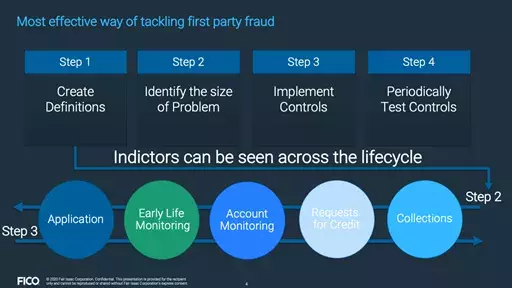Is Bust-Out Fraud Hiding as Bad Debt on Your Balance Sheet?
Bust-out fraud is a type of fraud that often masquerades as bad debt - but it can never be collected, because the account owner has no intention to pay

Bust-out fraud is one of the most common types of fraud. It occurs when people use either their own identity or a stolen or synthetic one to set up an account. They then manage that account until they have maximized the credit they have access to. Once they can extract the maximum value they take the money and abandon the account with no intention to pay.
Since these accounts are managed in a similar manner to that of legitimate accountholders, detecting an impending bust-out is difficult for fraud teams. Consequently, when such fraud occurs it is frequently mis-identified as bad debt.
Bust-Out Fraud Damages Every Organization
Credit card fraud is the classic example; fraudsters use stolen identities to apply for and use the credit card. They make regular payments for a short while, then quickly max out their credit and abandon the account, with no plans of future repayment.
Bust-out fraud is a major force wherever there is a trusted exchange of money – from consumer and commercial loans, to healthcare and home insurance reimbursements, to tax refunds.
Because bust-out fraudsters appear, on the surface, to be legitimate bank customers, the financial damage they incur is typically classified as defaults or other bad debt. But bust-outs are a fraud problem, not a default problem, and a big one.
Analysts estimate that between 10% and 15% of all banks’ unsecured bad debt is actually bust-out fraud, resulting in tens of billions in losses every year. Financial results are skewed, and untold resources are spent chasing down debt that will never be collected.
In fact, bust-out fraud is a form of first-party fraud. It's sometimes also referred to as hit-and-run fraud. Bust-out fraud often has the pattern of a criminal or gang taking out accounts, making payments to gain the lender's trust (and increase credit limits), then running up spending to the max and disappearing, with no further payments made.
FICO has seen people such as students and people in financial hardship opening accounts on behalf of criminals with these fraudulent intentions. Unfortunately, these accounts can be used not just for bust-out fraud but also for schemes like money muling and laundering, which finance criminal activities including drugs and slavery.
How to Spot Potential Bust-Out Fraud
While it may look like bad debt on your books, there are indicators that can be tracked across the customer lifecycle, and these indicators can help you spot when a bust-out has occurred, and prevent other instances. FICO® Advisory Services teams can help you spot the difference between bust-out fraud and "legitimate" bad debt, and develop strategies, processes and technology solutions to improve detection and reduce fraud.
It starts by creating accurate first-party fraud definitions, which can lead to quantifying the size of the problem. These may seem obvious, but in fact they are often the most difficult steps in the process.

Social Network Analysis - How to Spot Gang Schemes
One key to finding evidence of gang activity in bust-out fraud is using social network analysis. This form of analytics systematically scans disparate and siloed data sources, uncovering links between people, accounts, identities, places and events. These relationships can be from shared phone numbers, physical addresses, bank accounts, credit cards, or any other connection that is available through data capture. These links often indicate patterns of criminal behavior, and can help you stop gangs from making further raids on your accounts.
By proactively exposing fraud rings’ biggest vulnerability, shared identity information, social link analysis uses more information to identify more relationships – and bust more bust-out fraud schemes.
How FICO Can Help You Fight First-Party Fraud
- Read 5 Strategies for Fighting First-Party and Synthetic Identity Fraud and our white paper Predicting First-Party Fraud: Bridging the Chasm Between Credit Risk and Fraud
- Read What Is First-Party Fraud? for more information
- Explore our application fraud solution
- Discover our solutions for fraud protection
Popular Posts

Business and IT Alignment is Critical to Your AI Success
These are the five pillars that can unite business and IT goals and convert artificial intelligence into measurable value — fast
Read more
FICO® Score 10T Decisively Beats VantageScore 4.0 on Predictability
An analysis by FICO data scientists has found that FICO Score 10T significantly outperforms VantageScore 4.0 in mortgage origination predictive power.
Read more
Average U.S. FICO Score at 717 as More Consumers Face Financial Headwinds
Outlier or Start of a New Credit Score Trend?
Read moreTake the next step
Connect with FICO for answers to all your product and solution questions. Interested in becoming a business partner? Contact us to learn more. We look forward to hearing from you.
